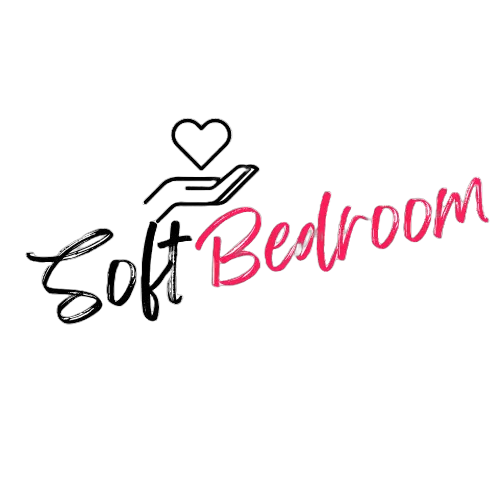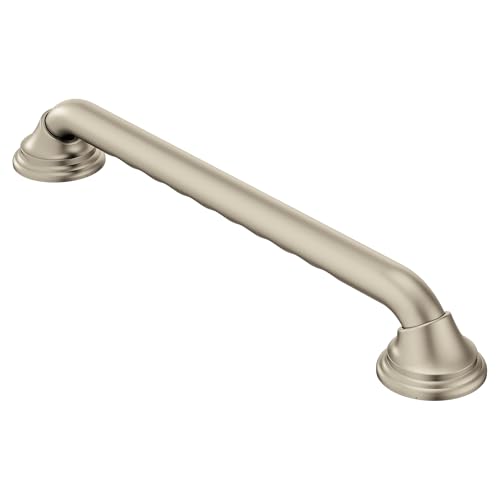Disclosure
This website is a participant in the Amazon Services LLC Associates Program, an affiliate advertising program designed to provide a means for us to earn fees by linking to Amazon.com and affiliated sites.
As we age, the need for a safe and supportive environment becomes increasingly vital. One of the most important spaces to ensure safety is the bedroom, where the elderly spend a significant amount of time resting and sleeping. So, how can you make your bedroom safer for the elderly?
The answer lies in addressing potential hazards, optimizing mobility, and implementing simple modifications that prevent falls and accidents. In this guide, we’ll explore practical strategies to create a safe and comfortable bedroom for elderly loved ones. From furniture arrangement to lighting, we’ll cover everything you need to know to make the bedroom a secure haven for the elderly.
Best Products for Making Your Bedroom Safer for the Elderly
When making your bedroom safer for elderly individuals, certain products can significantly enhance safety and comfort. Here are the top three products that can be incredibly helpful:
Grab Bars for Bedroom Walls (e.g., Moen Home Care Designer Grab Bar)
Grab bars are essential for providing stability and support when getting in and out of bed. The Moen Home Care Designer Grab Bar is designed for easy installation and a stylish appearance, perfect for both bathroom and bedroom use. It helps prevent falls and supports mobility, especially for individuals with limited strength or balance.
- DURABLE & SUPPORTIVE CONSTRUCTION: 16-inch long stainless steel grab bar…
- EASY INSTALLATION: SecureMount design for easy, secure installation (sold…
- STYLISH NICKEL FINISH: Brushed nickel finish provides a lightly brushed…
Non-Slip Rug Pads (e.g., Mohawk Home Dual Surface Rug Pad)
Slippery rugs can pose a significant risk for falls in the bedroom. The Mohawk Home Dual Surface Rug Pad helps prevent slipping while also extending the lifespan of your rugs. By adding this under rugs, you create a safer walking surface that reduces the likelihood of accidents.
- NON SLIP: The latex rubber backing provides additional grip under your area rugs…
- DURABLE COMFORT CUSHION: Choose from three felt thickness options – 1/4″,…
- RECOMMENDED USE: Larger area rugs, over 5×8, with latex backing provide the best…
Adjustable Bed (e.g., Lucid L300 Adjustable Bed Base)
An adjustable bed allows seniors to easily elevate their head or legs, which is especially helpful for individuals with medical conditions like arthritis, back pain, or difficulty getting out of bed. The Lucid L300 Adjustable Bed Base is known for its simple remote control features and sturdy build, enhancing comfort while reducing the risk of strain or falls when transitioning from a lying to sitting position.
- EASY TWO-PERSON ASSEMBLY: It doesn’t take a professional pit crew to assemble…
- RELAX AND RECOVER: After a long day, there is no place better than your bed….
- COMPATIBLE WITH MOST MATTRESSES AND BED FRAMES: The adjustable bed base can be…
Eliminate Tripping Hazards
One of the primary causes of falls in the elderly is tripping over obstacles. A bedroom can quickly become cluttered with furniture, loose cords, or scattered items, making it unsafe for seniors. To make your bedroom safer for the elderly, it’s essential to remove any unnecessary items that could potentially lead to tripping accidents.
Steps to reduce tripping hazards
- Clear pathways: Ensure that there’s ample space around the bed and other furniture. Avoid placing furniture too close to walkways.
- Secure cords: Bundle or secure cords for lamps, chargers, and electronics. Consider using cord management products or opting for wireless devices where possible.
- Keep the floor clear: Avoid clutter, and ensure that any personal items, such as books or clothing, are stored neatly away.
Making the bedroom a clutter-free zone is one of the simplest and most effective strategies to reduce the risk of falls.
Improve Lighting for Better Visibility
Proper lighting is critical in any home, but it becomes even more crucial when considering the safety of the elderly. Diminished vision, whether due to aging or medical conditions, makes it harder for seniors to detect obstacles or changes in floor levels. Well-lit environments help prevent accidents and create a comfortable atmosphere that encourages independent movement.
Tips to improve lighting
- Install motion-sensor lights: These lights automatically turn on when someone enters the room, providing instant illumination without the need to fumble for a switch.
- Use soft, warm lighting: Harsh, bright lights can be glaring. Opt for softer, warmer light bulbs to reduce eye strain and create a more comfortable setting.
- Add bedside lamps: Having easily accessible lamps on both sides of the bed ensures that the elderly can turn on the light when they need to get up during the night without walking to a switch.
- Consider night lights: Night lights are especially helpful in the bedroom or hallway. They guide the way when seniors need to use the restroom during the night, minimizing the risk of falling.
With the right lighting solutions, you can make sure the bedroom is well-lit for any situation, improving both safety and comfort.
Optimize Bed Height and Support
For the elderly, getting in and out of bed can become increasingly difficult, especially if the bed is too high or too low. The bed’s height plays a significant role in the ease of movement, reducing strain on joints and preventing accidents when transitioning from lying down to standing. Ensuring that the bed is at an appropriate height can make a big difference in overall comfort and safety.
How to optimize bed height and support
- Adjustable beds: Adjustable bed frames allow seniors to elevate the head or foot of the bed, providing better support for various conditions like acid reflux or swelling in the legs. This also makes it easier for them to get in and out of bed without assistance.
- Bed rails or grab bars: Installing bed rails or grab bars on the sides of the bed can offer extra support when getting in and out of bed, reducing the risk of falls. These provide a firm grip, making the process smoother and safer.
- Mattress support: A mattress that’s too soft or too firm can cause discomfort and lead to difficulty getting up. Ensure that the mattress provides adequate support to reduce pressure points. Consider investing in a mattress designed specifically for the elderly, such as those with memory foam or pressure-relieving features.
Increase Fall Prevention with Non-Slip Flooring
Falls are a major concern in the elderly, and slippery floors can increase the likelihood of such accidents in the bedroom. Hardwood, tile, and laminate flooring, while beautiful, can be hazardous if not treated properly. Non-slip flooring or additional protective measures can drastically improve the safety of the space.
Ways to prevent falls with non-slip flooring
- Non-slip rugs: Place non-slip pads under rugs or consider non-slip rugs that are designed for high-traffic areas. This prevents the rugs from shifting or bunching up, which can be a major trip hazard.
- Install carpet or area rugs: Adding carpeting or large area rugs with non-slip backing can help create a more secure walking surface. These provide cushioning in the event of a fall and reduce the risk of slipping.
- Rubber floor mats: Rubber mats are great for specific areas, such as near the bed or closet. They provide extra grip and support, helping elderly individuals maintain stability as they move around.
When choosing flooring options, look for products that specifically state they are non-slip or have a slip-resistant coating. These flooring options not only enhance safety but also provide comfort and warmth.
Incorporate Easy-to-Reach Storage Solutions
As mobility and flexibility decrease with age, it’s important to ensure that storage spaces are accessible and easy to use. Reaching for high shelves, bending to pick up items, or navigating crowded storage areas can increase the risk of falls or strain.
Tips for easy-to-reach storage
- Lower shelves: Install shelves at a lower height so that they’re within easy reach. Consider placing commonly used items like clothes, toiletries, and medications on lower shelves or in drawers.
- Pull-out baskets and drawers: Sliding or pull-out storage solutions make it easy to access items without having to stretch or bend awkwardly. These can be installed in dressers, wardrobes, or under the bed.
- Label storage: Clear labeling of storage areas helps elderly individuals quickly locate the items they need, reducing frustration and the potential for accidents from searching through cluttered spaces.
- Use lightweight containers: Choose lightweight baskets or bins that can easily be pulled out and handled. Heavy containers can be difficult to manage and may cause injury when lifting.
Conclusion
Creating a safer bedroom environment for the elderly is essential for their well-being and independence. Making simple adjustments—such as eliminating tripping hazards, improving lighting, optimizing bed height and support, using non-slip flooring, and incorporating accessible storage—you can significantly reduce the risk of accidents.
These modifications not only prevent falls but also enhance comfort, encouraging a better quality of life for seniors. Taking proactive steps to make the bedroom a safer space demonstrates care and concern, helping elderly individuals live more confidently and comfortably in their own homes. Start implementing these changes today, and create a safer, more supportive environment for your loved ones.
FAQs
What are the most common bedroom hazards for the elderly?
The most common bedroom hazards for the elderly include tripping over loose rugs, falling out of bed, poor lighting, and difficulty moving around due to furniture placement. Slippery floors, high bed heights, and hard-to-reach storage can also contribute to accidents. By addressing these issues with proper modifications, you can reduce the risk of falls and injuries.
How can I make a bedroom safer for someone with limited mobility?
For individuals with limited mobility, consider installing grab bars, choosing an adjustable bed to help with getting in and out, and ensuring there is ample space around the room to allow for easy movement. Non-slip rugs and carpets, along with accessible storage solutions, can also improve safety and comfort.
Should I use a hospital bed for elderly individuals?
While a hospital bed might be a good option for those with specific medical needs, many adjustable bed frames provide similar benefits and can be more comfortable and aesthetically pleasing for a bedroom setting. If the elderly person requires frequent adjustments for health reasons, a hospital bed might be necessary.
Are there any recommended products to reduce the risk of falls in the bedroom?
Yes, several products can help reduce the risk of falls. These include grab bars, motion-sensor lighting, non-slip rug pads, and adjustable beds. You should also consider a bedside alarm system for emergency situations and floor mats with cushioning to reduce injury if a fall does occur.
How can I improve lighting for an elderly person in their bedroom?
Improving lighting for the elderly can involve installing motion-sensor lights, using bedside lamps that are easily accessible, and opting for warm, soft light to reduce glare. Night lights or pathway lights can also help guide the way during nighttime trips.



